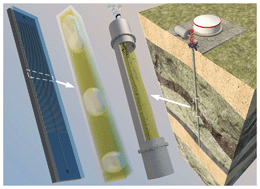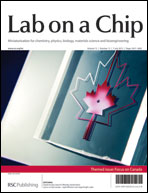A method for measuring the equilibrium GOR (gas–oil ratio) of reservoir fluids using microfluidic technology is developed. Live crude oils (crude oil with dissolved gas) are injected into a long serpentine microchannel at reservoir pressure. The fluid forms a segmented flow as it travels through the channel. Gas and liquid phases are produced from the exit port of the channel that is maintained at atmospheric conditions. The process is analogous to the production of crude oil from a formation. By using compositional analysis and thermodynamic principles of hydrocarbon fluids, we show excellent equilibrium between the produced gas and liquid phases is achieved. The GOR of a reservoir fluid is a key parameter in determining the equation of state of a crude oil. Equations of state that are commonly used in petroleum engineering and reservoir simulations describe the phase behaviour of a fluid at equilibrium state. Therefore, to accurately determine the coefficients of an equation of state, the produced gas and liquid phases have to be as close to the thermodynamic equilibrium as possible. In the examples presented here, the GORs measured with the microfluidic technique agreed with GOR values obtained from conventional methods. Furthermore, when compared to conventional methods, the microfluidic technique was simpler to perform, required less equipment, and yielded better repeatability.

You have access to this article
 Please wait while we load your content...
Something went wrong. Try again?
Please wait while we load your content...
Something went wrong. Try again?


 Please wait while we load your content...
Please wait while we load your content...